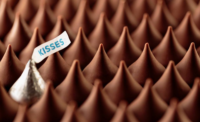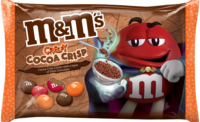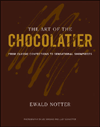It turns out that 90 percent of shoppers will not change lanes to grab a confection they want from a different checkout lane. That’s according to the latest analysis from Mars Wrigley about selling candy at checkouts.
“This knowledge presents both an opportunity and a challenge for retailers looking to create an engaging transaction zone,” the candy company says.
This year Mars Wrigley has updated its Transaction Zone Vision to become the Transaction Zone Strategy. This shift represents the depth and breadth of the global insights the confectionery leader refined for this program.
And the candy company’s global research, rooted in the shopper’s journey, has identified three primary drivers for purchasing confections at the end of a shopping trip — Refresh, Reward, Recharge.
With these understandings, retailers can redesign the in-store checkout and the growing self-checkout area (54 percent of Millennials prefer this method) to connect with its shoppers and drive sales.
“At Mars Wrigley, we are deeply committed to bringing new insights and recommendations rooted in how the customer is behaving,” said Shaf Lalani, v.p. of strategic demand leadership at Mars Wrigley. “Our ever-evolving Transaction Zone Strategy is a robust set of recommendations to remind customers to Recharge, Refresh, Reward with the products they love before leaving the store.”
Mars Wrigley encourages retailers to reimagine the traditional checkout shelving flow and utilize the growing self-checkout.
Here’s a look at five of the company's tips for selling more candy at the checkout:
1. Display more bulk gum
Mars Wrigley suggests placing gum and mint products over the belt and working to accommodate the increased mix of bulk and bottle gum.
Since 2014, bulk and bottle gum has grown 2.6 times the rate of the total gum category. This is because when shoppers have more on hand, they consume and replenish supply more often.
2. Realign the self-check queue
Self-checkout is rapidly growing among Millennials because they are looking for quick convenience and are always on-the-go. One thing retailers can do to create a more profitable transaction zone there is to create a queue instead of individual walls of products by each self-checkout, creating a clear path with a single exit and entry.
3. Include must-have items at self-checkout
Merchandise the queue with “must-have” high-impulse products like confectionery, beverage and salty snacks. And it turns out chocolate is the most preferred item among top front-end categories regardless of traditional, self-checkout or express checkout type, so you’ll want to make sure to include that as well.
4. Repeat items in the self-check queue
Mars Wrigley suggests repeating placements of the power categories throughout the self-check queue to give shoppers multiple opportunities to reach for a last-minute item.
5. Use new flexible merchandising units
Reinventing the self-checkout by designing new flexible merchandising units to enables soft queuing and helps retailers realize confectionery sales in this evolving space.










